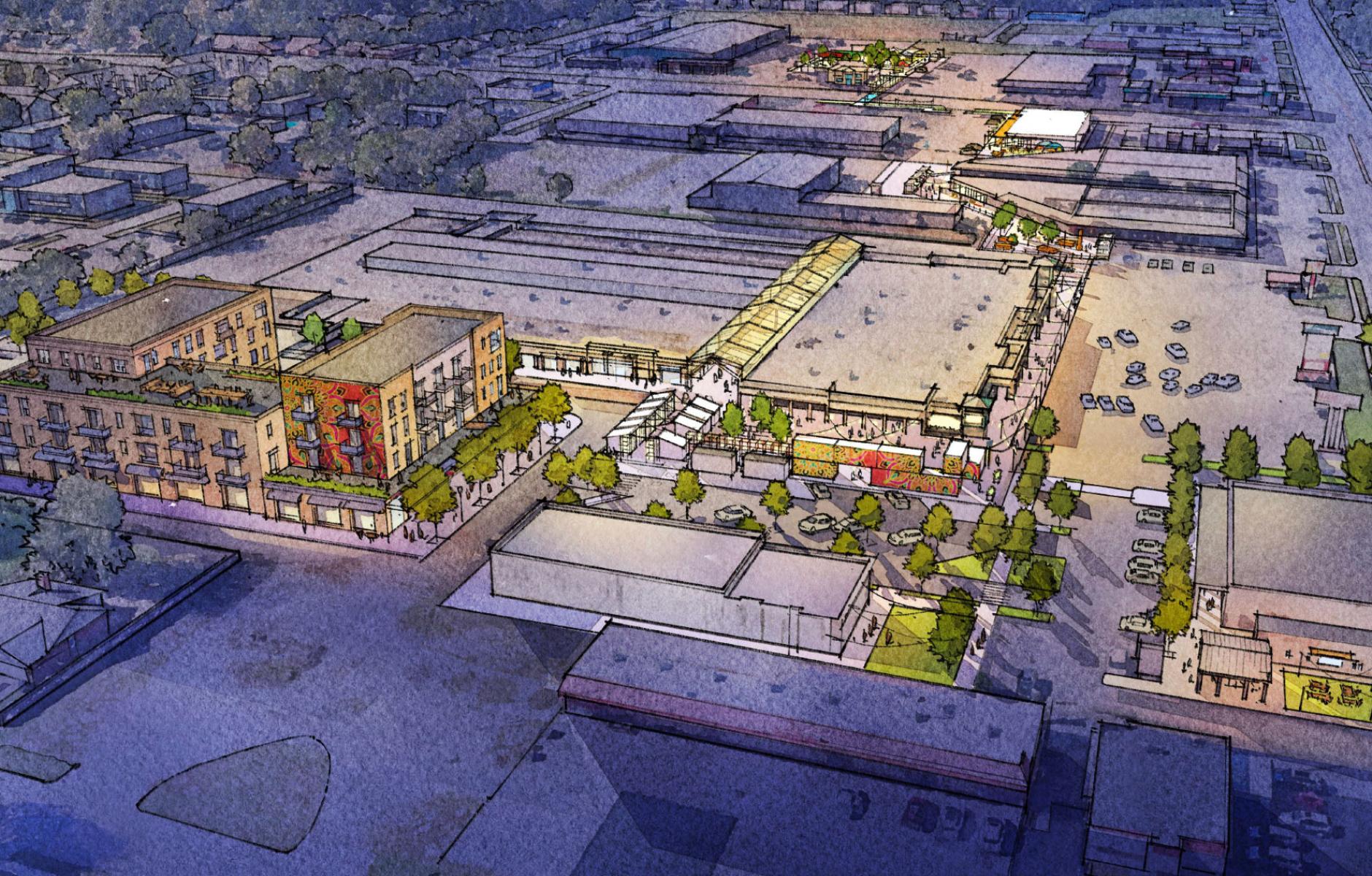
Tulsa Global District’s a new kind of Main Street
As part of CNU 30 in Oklahoma City in 2022, YARD & Co. and CNU sponsored a Legacy Project in the Tulsa Global District, a large suburban commercial district at the intersection of two major thoroughfares occupied by about 200 businesses, mostly owned by Hispanic, Vietnamese, and Chinese immigrants.
The Legacy Project addressed this question: How do you create a community that will function as a traditional “main street” when there is no physical main street?
The project began with a tactical public space built and a planning session conducted in March of 2022, ahead of the Congress (CNU’s “coming out party” after the organization operated virtually for two years during COVID).
Nearly three years later, Tulsa Global District has made substantial progress, and the original question has been answered in detail. The Global District Strategic Investment Plan offers new techniques for transforming aging suburban commercial districts using Tactical Urbanism and semipermanent public spaces.

The planned “main street” looks funky and unique, very much an evolution of the existing built form rather than a teardown and reconstruction of a traditional mixed-use center. The commercial district evolved over 50 years at the intersection of Garnett Road and East 21st Street. It consists of single-story commercial buildings surrounded by parking lots of various sizes.
The Strategic Plan works with that reality and doesn’t attempt to transform the existing arterials—although crossings must be improved. The project strives toward principles of New Urbanism in its focus on walkability, placemaking, connectivity, framing public spaces with buildings, structures, and landscaping, and, ultimately, mixed-use development.
The Tulsa Global District nonprofit has led the effort and received substantial funding from Tulsa’s George Kaiser Family Foundation. YARD & Co. is still the principal planner.
Here are the highlights of the project:
- The Square at Nam Hai. This was the original tactical public space created in the 2022 Legacy Project, but it has evolved. It will be rebuilt in a more permanent form and shifted to an adjacent site that is more centrally located, allowing for adjacent mixed-use development. The square will build community in the Global District, by giving residents, workers, and visitors a place to meet and congregate.
- Plaza Santa Cecilia. The plan is to transform an underutilized parking area in front of a Hispanic Market, the Plaza Santa Cecilia, “into a lively public space taking inspiration from countless plazas across Latin America.” The new public space would host public events with food trucks, seating, and shelter, allow for informal play and gathering, and serve as a bus stop. An adjacent business incubator is planned, and the George Kaiser Family Foundation has allocated $1.4 million to make it happen.
- The Celebration Trail is envisioned to link public spaces together. This project grew out of a loop trail proposal in the CNU Legacy Project plan, but a linear trail made more sense to implement—and the intent is to create a functional main street. Like traditional main streets, it will be useful for pedestrians, bikers, and drivers. The trail is expected to create better multimodal connectivity in the Global District, originally intended for automotive travel. The improved mobility would, in turn, enhance safety and boost opportunities for routine physical exercise. The planned trail is about 2000 feet long, passing by existing parking areas and buildings and crossing over an arterial thoroughfare, Garnett Road.
- Other public spaces. In between the square and plaza several public spaces are planned along the Celebration Trail, separated by hundreds of feet, providing frequent points of interest like city blocks. YARD calls these points “breadcrumbs” along the way.
- Land lease investment. Funders are investing in the District, but they don't want to displace the existing residents and owners. To accomplish that goal, the idea is for the Global District nonprofit to lease land, which provides revenue for owners while also giving the nonprofit and its funders some control over the transformation of underutilized parking areas. This tool is useful for suburban retrofit, where the building owners don’t need entire large parking areas that are not fully used, even on the busiest days.

The Global District was founded in 2020 to facilitate the growth and revitalization of the commercial area. The COVID-19 pandemic slowed the growth of the Main Street program, which has recently strengthened through the District’s strategic plan and internal operations.
The Legacy Project included three initiatives: to activate a new public space, initiate a high-level strategic plan, and develop a 12-month road map. In 2023, the Global District secured funding for the Strategic Plan, hiring a team led by YARD & Co to draw up the Strategic Plan, a remarkable document with impressive graphics.
The plan includes four main components. The first is research and analysis, including traffic and parking. The oversupply of parking led to a goal of re-thinking some of the vast parking areas as multi-use public spaces for everyone.
Other conclusions include starting on the south side of 21st Street to maximize the impact of the investment revitalization. The largest areas of the District are on the south side, and that is where the major public spaces are planned. The analysis also proposed the long-term lease strategy of vacant commercial space and long-term parking, addressing deferred maintenance and tailoring business support by addressing gaps in tools available to the small business ecosystem.

Other plan elements include connections, retail and public space, and site development. The latter long-term mixed-use plans could move forward on unused parking areas, especially near the Nam Hai Market and Cherokee Shopping Center, which is on the north side of the Global District.
The Global District is typical in form to suburban commercial areas of its size—approximately 845,000 square feet in leasable buildings. Nearly all of the 84 buildings were constructed before 2000, and they contain approximately 271 storefronts and spaces, with a vacancy rate of 26 percent. Despite that vacancy, the Global District is vibrant economically, with 29 full-service restaurants.




